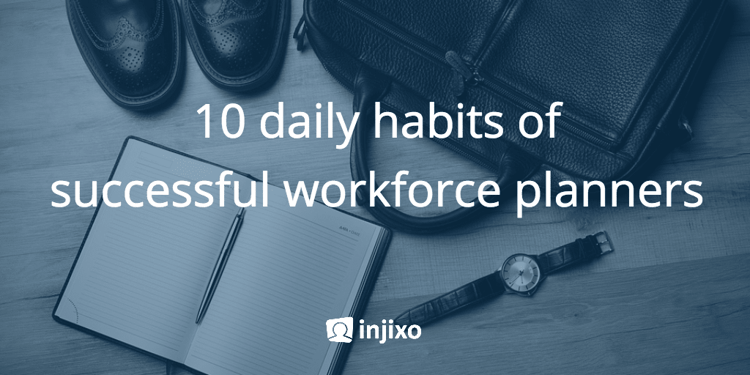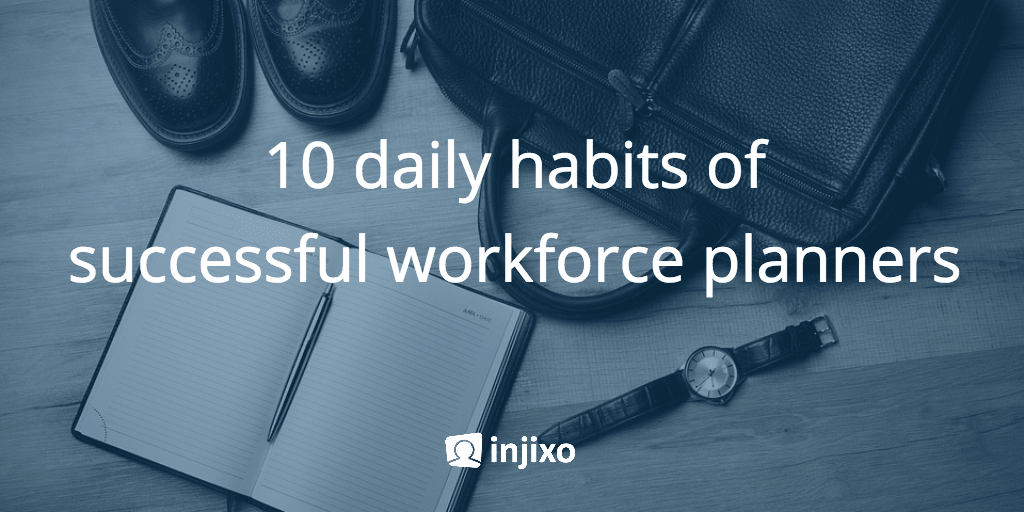In Part 1/2 of this post series we listed the first 5 daily habits of a successful workforce planner: keeping an eye on the figures, reacting quickly and appropriately to intraday issues, offering time off at short notice, processing holiday requests quickly and making time for learning.

Now we will focus on:
- Pulling information that helps you to do your job
- Pushing information to avoid ad-hoc interruptions
- Engaging with the front line
- Learning from your mistakes
- Testing critical changes in time to find and fix problems
6. Pulling information that helps you to do your job
Make sure that you are abreast of what is going on in other departments to avoid nasty surprises like unplanned marketing campaigns or price increases, which will trigger changes in contact patterns. Make sure you are copied in on all relevant communications and make a point of attending meetings which have the potential to impact planning metrics like service level.
7. Pushing information to avoid disruptive ad-hoc interruptions
Interruptions are the thief of time, so avoid them by regularly delivering succinct planning performance information to stakeholders such as senior management, HR and team leaders. You will delight your internal customers by providing timely and accurate Management Information (MI). It is much better to create MI at a time that suits you than to find yourself on the back foot when someone asks for a report just when you’re struggling to keep all the plates spinning on a busy day.
8. Engaging with the front line
Listen to front-line employees on a regular basis to get feedback on their schedules, how they are accessed, the holiday and shift swap process and other planning-related topics. There is an argument that agents are simply there to do a job and they should just work the shifts they are given. But let’s not forget that happy staff are productive and motivated staff, so you overlook agent morale at your peril. Staff turnover has a real impact on the bottom line, since it typically costs thousands to hire and train a new starter.
9. Learning from your mistakes
Murphy’s Law states ‘If it can go wrong, it will go wrong’. Take a note of those days when forecast accuracy was bad, you were seriously understaffed or service level took a hit. Identify the reasons why and the steps you took to correct the situation. Things do go wrong and mistakes are made; there is no shame in that. Good planners make sure that they don’t make the same mistake twice.
10. Testing critical changes in time to find and fix problems
Just-in-time delivery is proven to maximise efficiency in industries ranging from car manufacture to retail distribution to software development. But it should only be used in a business-as-usual context. When making changes to people (e.g. updated contract terms), technology (e.g. scheduling software) or processes (e.g. holiday approvals), the planner who leaves plenty of time for testing is the one who will succeed. A day spent finding and fixing problems before going live will save a week of headaches afterwards.
Did you find the article interesting and would like to share it with your colleagues? Download the article as a PDF.





